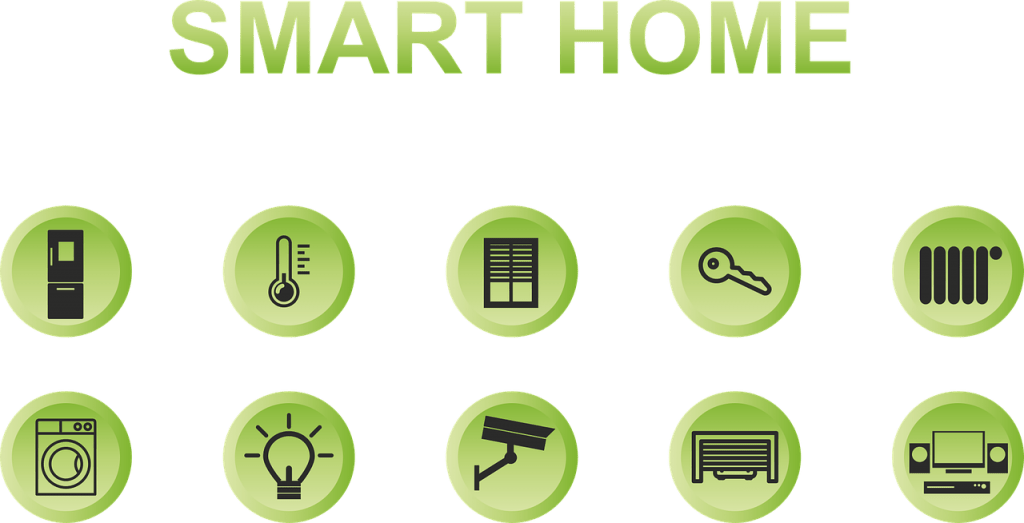This article is a guest post by Jane Marsh, Editor-in-chief of Environment.co. All views/opinions/suggestions are that of the guest writer. This Website may or may not subscribe to them.
From smart homes to smart factories, the Internet of Things (IoT) is starting to transform almost every aspect of modern life. One interesting application that’s become more popular over the past few years has been the use of IoT devices to improve HVAC efficiency.
Hardware like intelligent thermostats, smart vents and filter sensors are helping homeowners and building managers make HVAC systems more efficient, reducing costs and improving building comfort.
Smart Thermostats and Intelligent HVAC Management
HVAC systems account for about 40% of building energy consumption in commercial buildings. Finding ways to make these systems more efficient can help a home or building be much more eco-friendly.
Most smart HVAC systems begin with the installation of a smart thermostat and various environmental sensors. They track conditions like temperature and humidity.
The smart thermostat can adjust building temperature based on the information these sensors gather, helping to improve comfort and reduce energy consumption. It can also be controlled remotely through the use of manufacturer apps, allowing building owners to activate or deactivate HVAC systems without having to be in the building itself.
These thermostats can also be programmed to automatically adjust building temperature throughout the day or over a year.
As with most IoT systems, the apps that allow remote control also provide digital dashboards building owners and homeowners can use to look at the data their sensors collect. This provides a real-time picture of building environmental conditions.
Importantly, these temperature and humidity sensors can also make preventive HVAC maintenance much simpler. Humidity, increased utility bills and unusual equipment performance are all signs that an HVAC system is beginning to fail.
Sensors can watch out for these signs of potential failure, enabling the smart HVAC control system to automatically alert homeowners or building managers when the system may need repairs.
Smart HVAC Upgrades
Once temperature sensors or similar devices are in place, the building owner can add more smart devices to boost HVAC efficiency.
Smart vents are one way for building owners to approximate zoned heating and cooling for a fraction of the cost. They are affixed over existing vents and close or open dynamically based on the temperature of individual rooms or zones throughout a structure, directing hot and cold air to keep different zones at various temperatures.
In practice, this allows a building owner to cool a single room without necessarily cooling the entire building.
There are disadvantages to the approach compared to conventional zoned HVAC systems. However, smart vents are typically easy to install and uninstall, are low-cost and can be controlled with the right IoT platform. This makes them an effective alternative even to more complex intelligent zoned heating systems.
Other devices can help to further improve HVAC effectiveness and efficiency. For example, air quality sensors can routinely scan for fine particulate matter and other pollutants. When it dips below a certain threshold, the system can automatically alert the building owner, signaling that an HVAC filter or filters should be changed.
The benefits of a smart system like this can be significant. In one 2021 study, researchers found that an AI-enabled HVAC system could reduce energy costs by as much as 30% — or even more in certain cities.
Along with other green upgrades suitable for homes and commercial buildings — like solar panel arrays and smart power strips — these smart HVAC systems could almost eliminate the carbon footprint.
Future IoT Upgrades for Building HVAC Systems
In the near future, new devices could further expand the role IoT can play in managing a building’s HVAC system.
Improved AI algorithms could boost the effectiveness of IoT HVAC management. New algorithms using the same data could find new potential efficiencies — increasing comfort and reducing energy consumption without any additional information.
Image by Pixaline from Pixabay
About The Author
Jane works as the Founder and Editor-in-Chief of Environment.co. She covers topics on energy and green technology.

